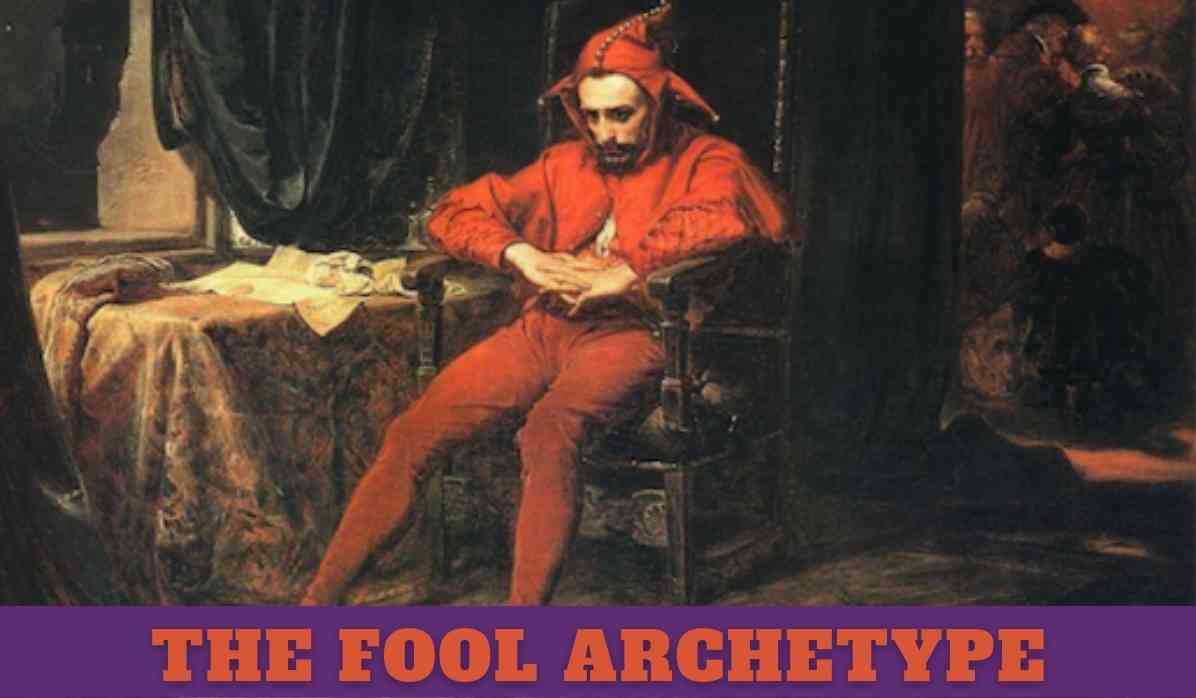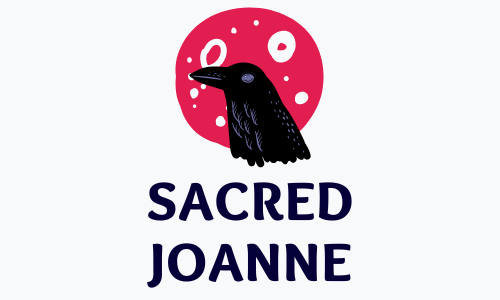How to Integrate The Fool Archetype (+Examples)

Let’s chat about the Fool archetype.
You might be thinking of those sneaky tricksters or clueless goofballs we often see in stories, but there’s so much more to it than that.
In fact, the Fool archetype is one of the most advanced.
Our world is full of rules, expectations, and stress – and sometimes, we just need a little help breaking free from all that.
That’s where the Fool archetype comes in, showing us how to be more resilient and truly enjoy life.
When we really get to know the Fool archetype and embrace it as part of our personality, we uncover a wise and spiritual side.
That’s right, the Fool can be wise too!
You might have also heard it called the Jester archetype.
The key here is that it encourages a beginner’s mindset, which can be a huge help throughout our lives.
Now, let’s dive into what makes it so special, explore its unique traits, and see how to integrate the fool archetype into greater success in life.
The Fool Archetype Strengths
Fearlessness
A well-developed Fool isn’t afraid to take risks or step outside their comfort zone.
They understand that sometimes, you have to leap into the unknown to grow and learn.
Embracing this fearlessness can lead to incredible discoveries and personal growth.
Creativity
The Fool is known for its creative spirit. When we channel this energy, we open ourselves to new ideas, solutions, and ways of thinking.
By tapping into our inner Fool, we can ignite our imaginations and think outside the box, which often leads to amazing innovations.
Adaptability
Life can be unpredictable, and the Fool excels at going with the flow.
They know that change is inevitable and can quickly adapt to new situations.
This adaptability can help us navigate life’s twists and turns more easily and even turn unexpected events into opportunities.
Humor
The Fool archetype is often associated with humor and laughter, which can be incredibly therapeutic.
RELATED: Most Independent MBTI Personalities Ranked
A well-developed Fool knows how to find humor in difficult situations and use it to lighten the mood, helping us cope with stress and maintain a positive outlook.
Curiosity
The Fool has a genuine sense of wonder and curiosity. They approach life with a “beginner’s mind,” eager to learn and experience new things.
By adopting this mindset, we can stay open to new possibilities, grow personally and professionally, and maintain our enthusiasm for life.
RELATED: Why Do Guys Let Girls Wear Their Hoodies? The Sweet Mystery
The Fool Archetype Lessons
Embrace the journey
The Fool reminds us that life is a journey full of twists and turns. Instead of worrying about the destination, focus on enjoying the ride.
Be present in each moment and open to the experiences that come your way.
By embracing the journey, you’ll find joy and fulfillment in even the smallest of moments.
Don’t take yourself too seriously
One of the Fool’s greatest strengths is their ability to laugh at themselves.
They recognize that everyone makes mistakes and that it’s okay to be imperfect.
By learning to laugh at our own foibles, we can cultivate a more lighthearted approach to life, making it easier to bounce back from setbacks and maintain our sense of humor.
Be open to new experiences
The Fool thrives on adventure and new experiences. They’re always eager to learn, grow, and explore.
Keep an open mind and be willing to step outside your comfort zone.
You might just discover new passions, meet interesting people, and gain a fresh perspective on life.
Trust your intuition
The Fool often operates on instinct and intuition.
While it’s important to make informed decisions, sometimes our gut feelings can guide us in the right direction.
RELATED: Most Mysterious MBTI Personalities Ranked
Learn to trust your intuition and be open to the wisdom that comes from within.
Stay curious
The Fool’s curiosity is infectious. They approach each situation with a sense of wonder and eagerness to learn.
Cultivate your own curiosity by asking questions, seeking out new information, and challenging your assumptions.
RELATED: Did Albert Einstein Meditate? Spirituality & Routine In His Work
This mindset will help you stay engaged with the world and lead to personal growth and development.
The Fool Archetype Weaknesses
Impulsiveness
The Fool’s spontaneity and sense of adventure can sometimes lead to impulsive decisions.
While it’s great to be open to new experiences, it’s also important to find a balance.
Practice taking a step back to assess the potential consequences of your actions and make more informed choices when necessary.
Lack of foresight
The Fool’s focus on the present moment can sometimes come at the expense of planning for the future.
While it’s important to live in the now, it’s also crucial to consider long-term goals and consequences.
Develop a habit of setting goals and creating plans to achieve them, ensuring that you’re prepared for the future while still enjoying the present.
Naiveté
The Fool’s innocence and trust can sometimes make them vulnerable to manipulation or deception.
Cultivate discernment by seeking out multiple perspectives, asking questions, and considering the motives of others.
RELATED: Which MBTI Is Most Manipulative?
This way, you can maintain your open-heartedness while staying aware of potential pitfalls.
Overconfidence
The Fool’s fearlessness can sometimes lead to overconfidence or recklessness.
Remember that it’s okay to be cautious and seek advice from others.
Surround yourself with a supportive network of friends and mentors who can help you navigate life’s challenges with wisdom and balance.
Difficulty committing
The Fool’s love of new experiences can sometimes make it challenging to commit to long-term projects or relationships.
Practice cultivating patience and persistence by setting small, achievable goals and celebrating your progress.
This will help you develop the focus and dedication needed for lasting success and fulfillment.
How To Integrate The Fool Archetype
Cultivate a beginner’s mindset
Approach each new experience with curiosity and an open mind, as if you’re encountering it for the first time.
This mindset will help you stay eager to learn and grow, and it’ll make every day feel like an adventure.
Find humor in everyday life
Look for the lighter side of things, even in challenging situations.
Practice laughing at yourself and finding the humor in life’s absurdities.
Not only will this improve your mood, but it can also help you cope with stress and keep things in perspective.
Take risks and embrace uncertainty
Don’t be afraid to step out of your comfort zone and try new things.
This might mean taking up a new hobby, traveling to an unfamiliar place, or sharing your thoughts and feelings with others.
The more you push your boundaries, the more you’ll grow and learn.
Practice mindfulness and presence
The Fool archetype encourages us to live in the present moment.
Develop a mindfulness practice, such as meditation or journaling, to help you stay grounded and fully engaged with the world around you.
Surround yourself with like-minded people
Seek out friends and mentors who embody the Fool’s spirit of adventure, humor, and curiosity.
RELATED: Most Mature MBTI Types: 16 Personalities Ranked
Spend time with those who inspire you to embrace your inner Fool and support your journey of personal growth.
The Fool Archetype Examples

Forrest Gump (Forrest Gump) – Forrest’s innocent and straightforward approach to life embodies the Fool’s spirit, and his journey teaches us valuable lessons about love, friendship, and destiny.
The Doctor (Doctor Who) – The Doctor’s sense of adventure, curiosity, and humor make them a perfect example of the Fool archetype, always exploring new worlds and learning from their experiences.
Pippin Took (The Lord of the Rings) – Pippin’s naive and carefree nature, along with his humorous moments, embodies the Fool archetype as he grows and evolves throughout the story.
Dory (Finding Nemo) – Dory’s forgetfulness and lighthearted approach to life make her a great example of the Fool, as she brings humor and a fresh perspective to the adventure.
Luna Lovegood (Harry Potter) – Luna’s unique outlook on life and her quirky, carefree attitude represent the Fool archetype, bringing a sense of wonder and magic to the story.
The Dude (The Big Lebowski) – The Dude’s laid-back attitude and ability to navigate a complex situation with a sense of humor exemplify the Fool archetype.
Peter Pan (Peter Pan) – Peter’s eternal youthfulness, sense of adventure, and refusal to conform to societal expectations embody the Fool’s spirit.
Patch Adams (Patch Adams) – Based on a real-life figure, Patch uses humor and an unconventional approach to help heal patients, demonstrating the Fool’s wisdom and compassion.
Charlie Chaplin’s Tramp character – The Tramp’s humorous antics, resilience, and ability to find joy in difficult circumstances make him a classic example of the Fool archetype.
Phoebe Buffay (Friends) – Phoebe’s quirky personality, unique outlook on life, and ability to find humor in any situation capture the essence of the Fool archetype.
Buddy the Elf (Elf) – Buddy’s innocent and childlike wonder, along with his hilarious fish-out-of-water experiences, make him a perfect representation of the Fool archetype.
Jack Sparrow (Pirates of the Caribbean) – Jack’s witty humor, unconventional methods, and ability to navigate danger with a sense of fun showcase the Fool’s adventurous spirit.
Ed (Shaun of the Dead) – Ed’s laid-back attitude and comic relief, even amidst a zombie apocalypse, embody the Fool’s ability to find humor in the direst situations.
The Scarecrow (The Wizard of Oz) – The Scarecrow’s journey to discover his own wisdom and his lighthearted demeanor align with the Fool archetype’s sense of curiosity and growth.
Ted Theodore Logan (Bill & Ted’s Excellent Adventure) – Ted’s innocent and carefree nature, combined with his enthusiasm for learning and time-traveling adventures, exemplifies the Fool’s spirit.
Cosmo Kramer (Seinfeld) – Kramer’s eccentric personality, wild ideas, and unconventional lifestyle make him a great example of the Fool archetype in a sitcom setting.
Michael Scott (The Office) – Michael’s well-meaning but often misguided actions, coupled with his humorous antics, showcase the Fool’s blend of naiveté and comic relief.
Baloo (The Jungle Book) – Baloo’s laid-back attitude, love for simple pleasures, and ability to teach life lessons through song and dance embody the essence of the Fool archetype.
Willy Wonka (Charlie and the Chocolate Factory) – Willy Wonka’s eccentricity, creativity, and whimsical approach to life capture the Fool’s spirit of adventure and imagination.
Don Quixote (Don Quixote) – As a classic literary character, Don Quixote’s misguided adventures and unwavering belief in chivalry demonstrate the Fool’s blend of innocence, idealism, and resilience.
The Fool Archetype & MBTI Personalities
While the Fool archetype can be found in various aspects of every personality type, some MBTI types might resonate more closely with the Fool’s traits.
Here are the five MBTI types that seem most similar to the Fool archetype, along with a brief explanation of why:
ENFP – Often known as the “Inspirer” or “Champion,” ENFPs are naturally curious, creative, and spontaneous. They love exploring new ideas and possibilities, making them a great match for the Fool’s adventurous and open-minded spirit.
ESFP – Also called the “Performer” or “Entertainer,” ESFPs are outgoing, fun-loving, and adaptable. They have a knack for finding joy in the present moment and thrive on new experiences, much like the Fool.
INFP – Known as the “Mediator” or “Idealist,” INFPs are deeply imaginative and have a strong sense of wonder. Their creative and introspective nature aligns well with the Fool’s curiosity and love for exploration.
ENTP – Often referred to as the “Visionary” or “Innovator,” ENTPs are quick-witted, inventive, and always up for a challenge. Their penchant for thinking outside the box and embracing new ideas mirrors the Fool’s adventurous and open-minded qualities.
ISFP – Sometimes called the “Adventurer” or “Composer,” ISFPs are artistic, sensitive, and spontaneous. Their appreciation for beauty, creativity, and living in the moment resonates with the Fool’s desire for adventure and self-expression.
RELATED: How to Build Trust With an INFJ: Form a Lasting Connection
Final Thoughts
In conclusion, the Fool archetype teaches us to embrace life’s journey with curiosity, humor, and an open heart.
By understanding the Fool’s strengths, weaknesses, and lessons, we can learn to navigate life’s ups and downs with grace and resilience.
Whether you identify with one of the MBTI types mentioned or not, we can all benefit from integrating the Fool’s spirit into our lives.
So go ahead, unleash your inner Fool, and enjoy the adventure that is life!
RELATED: Sagittarius Sun Gemini Moon: Dynamic Explorers
